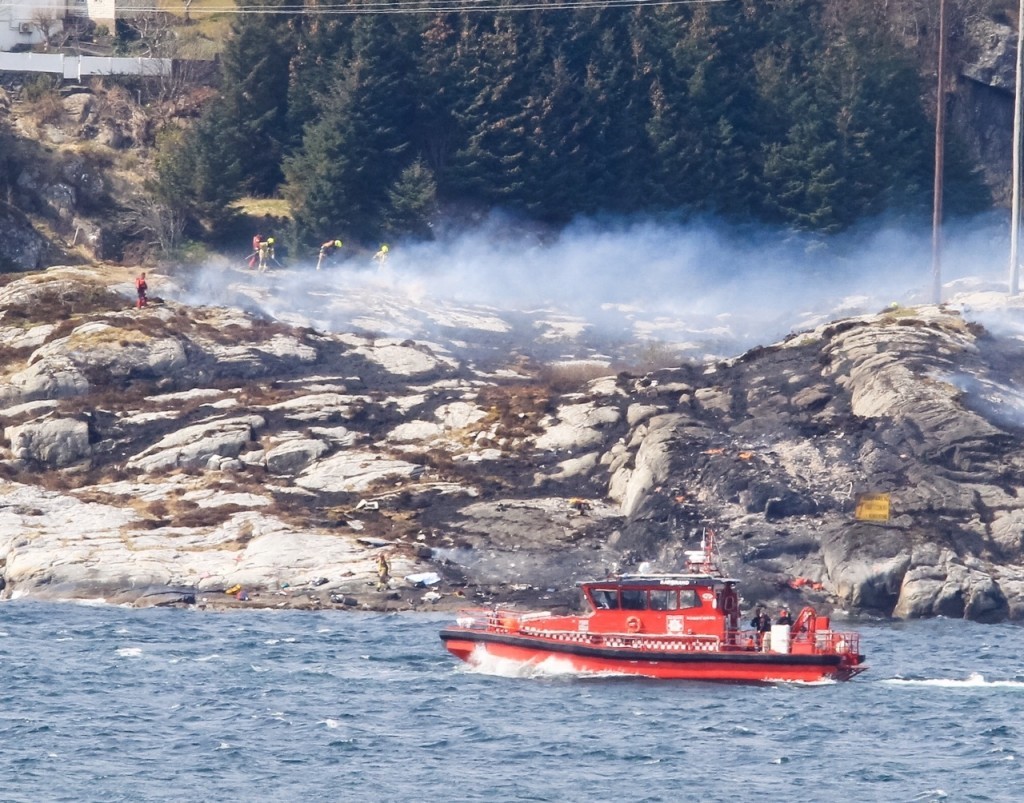
Oil giant BP has ruled out using controversial offshore helicopters in the North Sea until a root cause is discovered for a fatal crash off Norway that killed 13 people.
The supermajor noted the lifting of a flight ban on Super Puma helicopters but said it was “not considering” any return to service until investigations are complete and the reason for the accident has been identified.
Everyone on board the H225 aircraft died in the accident off Turoy last April, including Iain Stuart of Laurencekirk.
The 41-year-old had been working for Halliburton on the Gullfaks Oil field.
Energy Voice has asked several oil and gas operators if they would be willing to use the aircraft again after the UK and Norwegian Civil Aviation Authorities announced plans to lift North Sea flight restrictions last week.
A spokesman for BP’s North Sea operations said: “We note the announcement by the UK and Norway aviation authorities of their intention to remove the operating restrictions currently in place on the H225 and AS332L2 Super Puma type helicopters.
“BP is not considering any return to service of these aircraft at this time and no future decisions will be considered until completion of the AIBN and Airbus investigation processes and the formal identification of the root cause of the Norway incident.
“The safety and wellbeing of our offshore workforce remains our focus at this time.”
Globally BP is present in more than 70 countries worldwide and employs tens of thousands of people.
It was one of the first big companies to capitalise on North Sea industry starting back in the 1970s when it went into the Forties field, then operating under the name of British Petroleum.
Just two months ago Quad 204, one of the largest field redevelopments in North Sea history, was brought on stream by the firm.
The company expects first oil to flow from Clair Ridge, also west of Shetland, next year and has plans for up to five exploration wells in the UK over the coming 18 months.
But it appears that unless crash investigators find a definitive cause for the Turoy tragedy, the bulk of transfers will be carried out using alternatives to the Super Pumas.
The Airbus manufactured aircraft have been involved in a number of ditchings in recent years, including two other North Sea accidents which claimed a total of 20 lives.
European aviation body EASA grounded the aircraft in the aftermath of the Norway crash.
But the UK and Norwegian authorities kept the flight ban in place, waiting until Friday to unveil plans to lift it.
Helicopter operators Babcock and Bristow have not ruled out using Super Pumas again in the future.
The Super Pumas have been replaced, for the most part, by Sikorsky S92 helicopters.
The UK’s Civil Aviation Authority said it “had not taken the decision lightly” but that numerous changes and modifications had been made to the choppers since the crash last April.
Flights will not resume immediately as checks, modifications and inspections will need to be undertaken before the aircraft returns to service.
The CAA also said it will be up to aviation firms and their customers to decide whether they wish to re-introduce the helicopters.
And operators will need to supply safety cases to ensure that they have all the appropriate measures in place for a reintroduction.
Norwegian operator Statoil said previously it will not use Super Pumas even if the flight ban is lifted.
To read the latest update on the Norway crash investigation, click here.
Recommended for you
